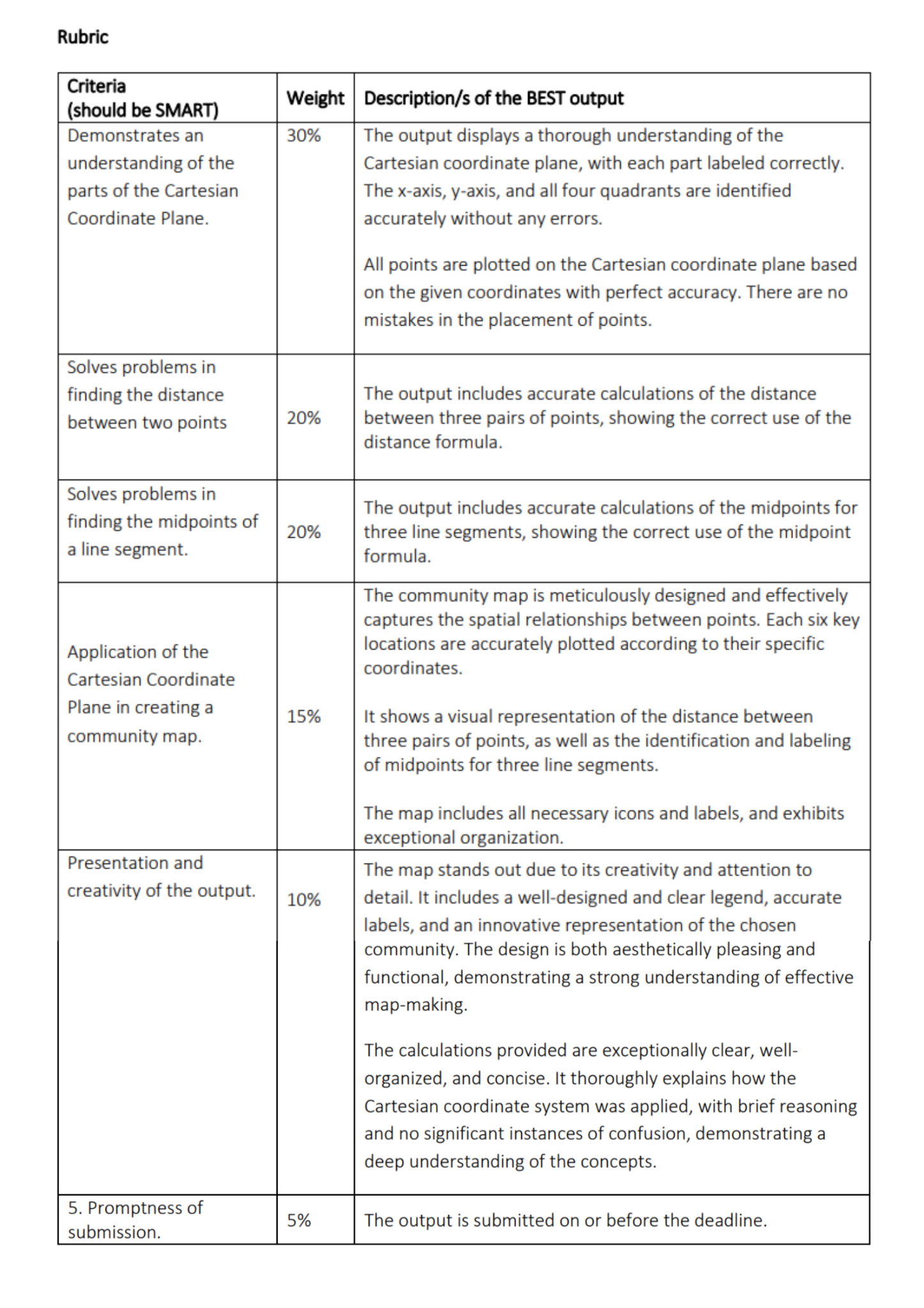Using Rubrics to Measure Competencies in Performance Tasks
This rubric serves as a supplementary tool to assess the performance task, ensuring that the identified competencies are measured accurately. It provides a clear framework for evaluating student behaviors, such as plotting points, calculating distances, and determining midpoints, as they complete the "Cartesian Coordinate Plane: Community Mapping Project." You can access the full performance task details here:
Cartesian Coordinate Plane: Community Mapping Project for Grade 8 Mathematics

REFLECTION
Rubrics play a crucial role in assessment by providing a clear, objective framework for evaluating student work. They ensure that grading is not arbitrary but aligned with specific competencies and learning outcomes. For example, in the Cartesian Coordinate Plane: Community Mapping Project, the rubric allows me to assess key behaviors like accurate point plotting (30%), correct distance calculations (25%), and the determination of midpoints (25%). Additionally, 20% is allocated for presentation and clarity of the map. Without these clear criteria and percentages, it would be impossible to give a fair grade, as students wouldn’t know the standards they are being held to.
For instance, I can't simply mark a student’s map as "good" or "bad." The rubric breaks down each part of the task, from the accuracy of plotting coordinates to the presentation of their final map, ensuring that every aspect of their performance is evaluated against measurable standards. This approach not only provides transparency but also allows students to understand where they excel and where they need to improve. Rubrics empower both teachers and students to focus on learning rather than arbitrary grading.
Post a comment